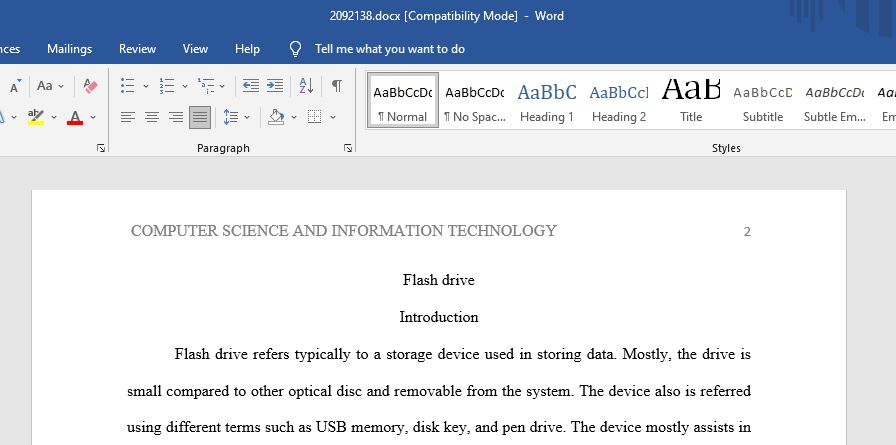Describe looks and features of computer Science and Information Technology
Assignment Overview
This assignment asks that you select a technical object and write a description of its looks, features, and functions. In completing this assignment, you will learn how to define and describe a technical object to someone who has little knowledge with it.
Assignment Guidelines
Begin by reviewing Gurak & Lannon, Chapter 12: Descriptions. You will choose your own topic for this assignment. However, the subject of your description should be a technical object (e.g., fitness tracker, flash drive, wrench, clock radio, calculator, smart
phone, game console, stapler, etc.). Because you must accurately describe an object in at least 500 words, do not pick something too simple (such as a paper clip). Choose a topic that is complex and manageable. Once you have identified a technical object, research it.
Take time to learn about what the parts are called and how they work. This might require you to read background information or otherwise inform yourself about the topic.
Audience and Content
Your primary audience would be someone who has little experience with the object that you are describing.
Regardless of the object, your final paper should be at least 500 words; you must include all of the following contents in your description:
• Introduction.
• Orient your audience by providing a one-sentence definition of the object.
• Preview its various parts.
• Discuss its uses and functions.
• Preview the content of your description.
• Detailed Description of the Object.
• Describe each part of the object in detail, including its dimensions, materials, principle(s) of operation, function, and relation to other parts.
• Use the present tense.
• When introducing a new concept or terminology, make sure to explain it for a non-technical audience.
• Conclusion.
• Re-state the major use(s) and function(s) of the object to solicit the audience’s support or awareness.
2. Document Design and Illustrations
Give careful thought to illustrations and design elements:
• Use headings and sub-headings throughout the document. Mark the introduction,
body, and conclusion of your document with headings; and use sub-headings to
indicate the beginning of each part/component of the objective you are describing.
DO NOT just throw large chunks of text together without clearly identifying each
part.
• Single-space the text.
• You must include at least two illustrations. You may create your own, use
illustrations from other sources, or adapt illustrations from other sources. Make
sure you provide source information for all illustrations immediately below each
illustration. (For example, for any photos you took: “Source: photo by author.” For
any illustrations from other sources: “Source: web site (or other resource listed
here).”
• Apply as many of the four basic design principles as possible (Contrast, Repetition,
Alignment, Proximity).
• Design your document for consistency (grid patterns, margins, justification, white
space, indentation, font style and size). See pages 136-140.
• Design your document for navigation and emphasis (headings, color, shading,
boldface, italic, and underlining, bulleted and numbered lists). See pages 140-145.
• Follow the tips for illustrating documents presented in Chapter 7.
• In addition to following all the instructions regarding assignment 4, please pay
special attention to “Document Design” when completing assignment 4. Like your
“Instructions” document, your Technical Object Description should reflect your
attention to “audience” in both content and design. In addition to reading Chapter 12
on “Descriptions,” review Chapters 7 and 8 on using visuals and designing userfriendly
documents. In addition to providing your audience with useful, accurate
information, your document should also be visually pleasing to the audience. Also,
don’t forget you are not writing a “commercial” for a particular object; you are
writing an objective, detailed description of the object.
Answer preview:
Words:783

